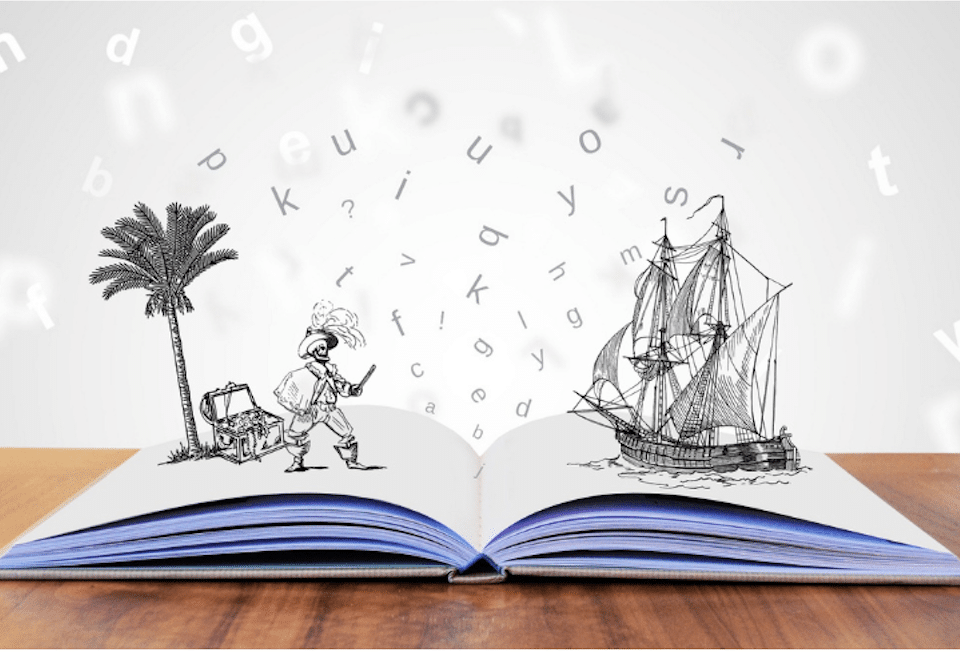
Why do job seekers lie?
22 March 2018
A guide to realising our potential
22 March 2018Article by Diego Ingrassia – “The SECRET LANGUAGE OF EMOTIONS”
for PSICOLOGIA CONTEMPORANEA – Emozioni – no. 262, July-August 2017 – GIUNTI EDITORE
The heart has reasons that reason does not know’ is a famous aphorism by Blaise Pascal, which sums up in a few words the role and importance of emotional intelligence three centuries ahead of the work of Salovey and Mayer, to whom reference is usually made when talking about the introduction of this concept into the scientific debate.
Daniel Goleman seems to be perfectly in tune with Pascal’s thought when, at the beginning of the first chapter of his 1995 book Emotional intelligence, he recounts the last desperate moments of life of Gary and Mary Jane Chauncey, a couple of parents who through their sacrifice manage to save their daughter Andrea, while the train in which they were travelling was sinking in the waters of a Louisiana river.
An irrational gesture, seen from a purely intellectual perspective, but one that, says Goleman, helps us understand the fundamental role that our evolution has assigned to emotions.
.
INTERPRETING EMOTIONS
But how aware are we of our emotions?
Let’s start with a simple example: we are joking with a friend of ours without paying particular attention to what we are saying, aware that the level of confidence we have allows us to be direct, ironic and sincere.
We indulge in colourful and sarcastic jokes, confident that he will not be offended, or so we think, because our friend, on the other hand, suddenly clams up.
The smiles vanish and his face rapidly changes: he lowers and unites his eyebrows, his lips thin and turn inwards, he looks us fixedly in the eye.
His arms and torso become immobile.
A shiver runs down our spine, and all of a sudden we feel an unfounded and incomprehensible uneasiness: a palpable tension, as if a mysterious negative energy was now ruining the harmony that existed between us.
An attentive observer, trained to recognise facial micro-expressions and other elements of non-verbal communication, looking at this scene from the outside would immediately understand the meaning of that rapidly evolving situation.
He would easily intuit the triggers and the probable evolution of the ongoing relational dynamic.
Those who have knowledge of how to correctly interpret body and facial language gain an objective advantage in communication, because through barely perceptible microsignals, in gestures or in the face, they can prevent behavioural reactions that could be set in motion by the interlocutor.
Catching these micro-signals at an early stage is particularly useful for managing potentially relationship-destroying emotions in ourselves and others.
But is non-verbal communication really so reliable in predicting emotions?
At this point, it is important to distinguish the aspects that we can confirm through scientific studies from those related to hypotheses, often suggestive but lacking a solid foundation.
A first example of an error that is widespread in many publications in the field is that of attributing a precise meaning to a certain gesture, thus believing we can interpret, without possibility of error, a certain situation by merely observing ‘body language’.
A very normal life situation can help us to better clarify this concept: let us observe that a friend of ours, while talking to us, crosses her arms and strokes her hair for a long time.
If we were to apply to the letter the interpretation in the manuals we have mentioned, we could convince ourselves that our friend is manifesting a closed attitude towards us (crossed arms) and that at the same time she is feeling anxiety (repeated manipulative gesture of straightening her hair).
In reality, these gestures can have multiple meanings. Some people (and perhaps our friend too) find this position comfortable and relaxing, or they assume it because they are slightly chilled and it helps to retain body heat better.
Manipulative gestures, such as caressing one’s face or hair, are simple and non-specific ways of discharge, not necessarily related to any emotion.
There are people who make these gestures when they are very agitated, others when they are fully relaxed and at ease.
These same behaviours may represent a stereotyped and habitual pastime, or simply counteract a sudden itch.
In short, the convenient idea of being able to establish a two-way correlation between gesture and meaning has no scientific basis and leads to inevitably incorrect interpretations.
UNIVERSAL FACIAL EXPRESSIONS.
A second important element to consider is the assessment of the ‘normal’ attitudes of the person we are observing.
This aspect, technically called baseline, includes the set of repetitive behaviours performed by the subject, i.e. the established habits and routines he/she has in a given environment.
In the absence of this analysis, it is not possible to understand whether a gesture or posture we observe in our interlocutor is due to a simple habit, or is linked to a specific stimulus or verbal content of the conversation in progress.
Finally, one last observation should lead us to be more cautious in our interpretation: many body language movements – gestures, postures, use of physical contact – we often do consciously and voluntarily, and in addition can be learnt by imitation.
This could be the case of a person who tends to be shy and reserved, induced to have to assume a more dynamic and jaunty attitude in managing relationships, for professional reasons.
Clearly, this effort to adapt leads to operating outside the so-called ‘comfort zone’, thus sacrificing part of one’s spontaneity in favour of a pre-established objective. This kind of self-imposed attitude may deceive a gaze looking for single confirmation signals, but it would hardly mislead the observer with a specific skill aimed at recognising very rapid facial micro-expressions that would appear at the first moment of stress, revealing, together with other behavioural manifestations, the real emotional experience of the subject in question.
It is impossible to control all channels of our communication at the same time, and therefore valuable information about thoughts and feelings spontaneously and inevitably emerges outside our awareness.
The observation of non-verbal behaviour can therefore draw on studies and research based on important scientific evidence.
Starting with the research work of Paul Ekman, we know that for some specific emotions there are unambiguous and very reliable signals.
The term ‘universal facial expressions’ indicates that certain facial expressions linked to a specific emotional meaning are manifested in the same way (i.e. with the same facial muscles) by any person in the world, regardless of the age, ethnicity, gender, education or cultural level of the person expressing it.
These universal facial expressions, to date, have been associated with 7 basic emotions: anger, fear, disgust, contempt (understood as a sense of superiority), surprise, happiness and sadness.
The facial expressions linked to these 7 emotions can manifest completely in the whole face, or only on a part of it (subtle expressions); sometimes, in fact, the telltale signs of an emotion can be seen in very slight movements of the mouth, forehead, eyelids or eyebrows.
It is therefore important to know what to observe, and to focus our attention on a few specific key movements.
He who is trained to pick up on these rapid micro-signals has a very effective tool: he can extract valuable information related to emotions that his interlocutor is not aware of manifesting, and verify it instantly by means of targeted questions.
Such skills, in our opinion, should be employed ethically, respecting the person and his privacy.
An exception to this may be court cases or security matters, where the stakes are very high: interviewing a suspect or trying to prevent a crime.
To gain a better understanding of this level of observation, we will now review the signals characterising each of these emotions, the causes (triggers) capable of triggering the emotion, and finally we will touch on the adaptive function, i.e. what role each of these emotions has played in our evolutionary journey (see box below).
The LINK OF LIFE
As we have seen, although emotions are manifested by the same facial muscles, they are subject to individual influences and therefore produce different reactions. A violent scene, for example, may trigger anger and an adrenalin rush: attacking to defend the one who has suffered violence. The same scene, however, might only generate outrage and disgust in the onlooker, or fear or sadness, accompanied by a desire to leave as soon as possible. Why does this happen? Are we all different? Not necessarily; in fact, there are universal stimuli capable of triggering the same emotion in every human being, think of a loss of balance that causes fear, or an obstacle that opposes our goals and generates anger, or a nauseating smell that triggers disgust in us. In other situations, on the other hand, we cannot disregard conditioning linked to personal experience, as in the case of certain fears and phobias: of flying, of being indoors or outdoors, of being in the dark, of facing emptiness, insects, etc. Once again, cultural elements are mixed with factors attributable to the evolution of the species, and this happens because environment and genetic characteristics have always influenced each other. Despite these individual characteristics that differentiate us, we are united as human beings by a truly extraordinary element: we feel emotions, we feel alive when we perceive them and for this reason we actively seek them out. Emotions, together with feelings, are the sap and nourishment that make us feel alive.
The 7 FUNDAMENTAL EMOTIONS
RAGE
The elements to note in facial expressions of anger are: eyebrows lowering and coming together, eyelids raising and stretching, and lips thinning (edges of lips turned inwards). What can make us angry: obstacles to achieving our goals, physical threats, insults aimed at us, a rejection or disappointed expectation. Adaptive function: anger helps us to be determined and to have the right energy to ‘remove’ an obstacle in front of us.
DISGUST
The upper lip rises, sometimes the nose curls up, we often turn away from the source of disgust, and we distance ourselves from it physically and psychologically. What can make us feel disgust: a taste, a bad smell, touching something slimy, the sight or thought of something we do not like. The stimuli that trigger disgust in us are more subjective and related to the culture we belong to (an immediate example: our preference or dislike of certain foods). On an interpersonal and relational level, people, by their actions or appearance, even their ideas, can also disgust us. Adaptive function: disgust prevents us from coming into contact with what we do not like or what may contaminate us (very much related to nutrition: avoiding poisonous or toxic substances).
SURPRISE
The eyebrows and upper eyelids rise, the jaw drops downwards but without tension. Surprise: anything unexpected and in our eyes unpredictable. Adaptive function: focusing our attention on a specific target entering our environment. Surprise often precedes other emotions: we may be surprised and then frightened if we notice a danger, or angry if we realise that something does not suit us, or feel joy when we are surprised or given a welcome surprise, etc.
DESPITE
One corner of our mouth compresses and lifts, the expression is therefore one-sided. What can make us contemptuous: an immoral action, a behaviour or a person we consider to be acting or expressing themselves in a stupid way, someone who hopelessly confronts us despite our obvious superiority in a field (challenging our leadership). Adaptive function: contempt allows us to safeguard our self-esteem and avoid entering into physical conflict (this behaviour is also seen in nature: the alpha male in chimpanzees often uses this mimicry to communicate to a potential rival their blatant superiority, and most of the time the inferior specimen retreats by displaying submissive attitudes).
FEAR
Eyebrows rise and come together, eyes open wide, lips pull towards the ears. What scares us: the stimuli that can frighten us can be potentially infinite and are often subjective, but they converge towards a common theme, namely the threat to one’s physical or psychological safety. Adaptive function: avoiding danger and quickly communicating to others present (who immediately react accordingly and become alarmed) the presence of a threat.
TREASURE
The middle part of the eyebrows rise, the corners of the mouth droop. What can make us sad: when we experience a loss or abandonment by someone we love, the loss of an opportunity or gratification, or empathising with the suffering of others. Adaptive function: asking for support or seeking a moment of solitude to recharge.
HAPPINESS
The corners of the mouth turn up, the corners of the eyes squint and horizontal lines appear (so-called ‘crow’s feet’). What makes us happy: sensory pleasure (derived from taste, smell, touch, sight and hearing), excitement about a new challenge or about something we find interesting, relief when a source of distress (even a physically painful stimulus) is removed, when something amuses us, when we are proud of ourselves or others, etc. Adaptive function: communicating openness and absence of threat towards those in front of us (smile that relieves tension).




